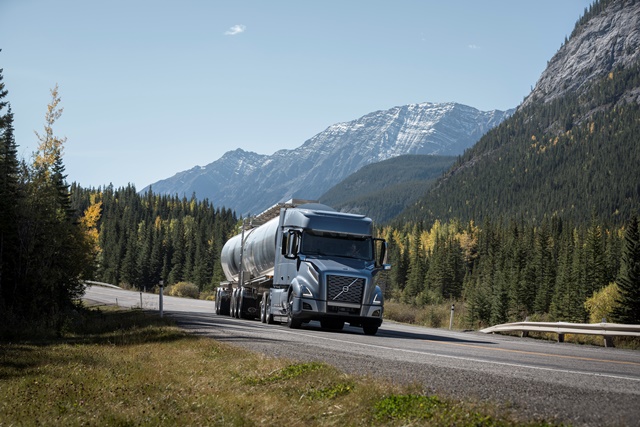WASHINGTON — The Bureau of Labor Statistics said Tuesday that there were 5,147 fatal work injuries in the United States in 2017, down slightly from the 5,190 fatal work injuries reported in 2016.
The fatal work injury rate decreased to 3.5 per 100,000 full-time equivalent (FTE) workers from 3.6 in 2016.
Transportation incidents accounted for 2,077 fatal work injuries or 40 percent the total.
There were 2,083 transportation incidents involving fatalities in 2016.
_________________________________________________________________________________________________________________________________________________________
CAPTION FOR PHOTO
Associated Press: MEL HOLTZ/ Frenchtown Rural Fire District
This photo provided by the Frenchtown Rural Fire District shows where five tractor-trailers crashed on icy Interstate 90 near the town of Superior in western Montana early Wednesday, leading to the deaths of two drivers and injuries to two other people, including a rural firefighter who slipped and fell on an icy bridge deck. One driver jumped out of his rig to avoid oncoming traffic and went over a guardrail, falling to his death.
__________________________________________________________________________________________________________________________________________________________
Transportation incidents include aircraft incidents, railway incidents, pedestrians struck and killed in a work zone, water vehicle incidents, roadway incidents and non roadway incidents involving a motorized land vehicles.
The transportation and material moving occupational group and the construction and extraction occupational group accounted for 47 percent of worker deaths in 2017.
Within the occupational subgroup driver/sales workers and truck drivers, heavy and tractor-trailer truck drivers had the largest number of fatal occupational injuries with 840.
This represented the highest value for heavy and tractor-trailer truck drivers since the occupational series began in 2003.
Other notable data from the report included:
- Grounds maintenance workers (including first-line supervisors) incurred 244 fatalities in 2017. This was a small decrease from the 2016 figure (247) but was still the second-highest total since 2003. A total of 36 deaths were because of falls from trees, and another 35 were because of being struck by a falling tree or branch.
- There were 258 fatalities among farmers, ranchers, and other agricultural managers in 2017. Approximately 63 percent of these farmers were age 65 and over (162) with 48 being age 80 or over. Of the 258 deaths, 103 involved a farm tractor.
- Police and sheriff’s patrol officers incurred 95 fatal occupational injuries in 2017, fewer than the 108 fatalities in 2016.
The BLS said other key findings of the 2017 data included:
- Fifteen percent of the fatally-injured workers in 2017 were age 65 or over – a series high. In 1992, the first year Census of Fatal Occupational Injuries (CFOI) published national data, that figure was 8 percent. These workers also had a higher fatality rate than other age groups in 2017.
- Fatalities incurred by non-Hispanic Black or African American workers and non-Hispanic Asian workers each decreased 10 percent from 2016 to 2017.
- Fatal occupational injuries in the private manufacturing industry and wholesale trade industry were the lowest since this series began in 2003.
- Workplace fatalities in the private mining, quarrying, and oil and gas extraction industry increased 26 percent to 112 in 2017 from a series low of 89 in 2016. Over 70 percent of these fatalities were incurred by workers in the oil and gas extraction industries.
- A total of 27 states had fewer fatal workplace injuries in 2017 than 2016, while 21 states and the District of Columbia had more; California and Maine had the same number as 2016. A total of 192 metropolitan statistical areas had 5 or more fatal work injuries in 2017.
The Trucker News Staff produces engaging content for not only TheTrucker.com, but also The Trucker Newspaper, which has been serving the trucking industry for more than 30 years. With a focus on drivers, the Trucker News Staff aims to provide relevant, objective content pertaining to the trucking segment of the transportation industry. The Trucker News Staff is based in Little Rock, Arkansas.








